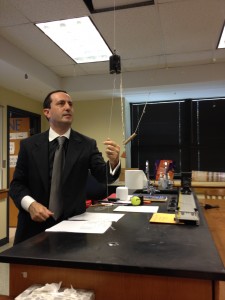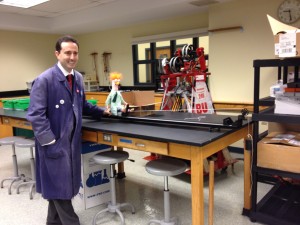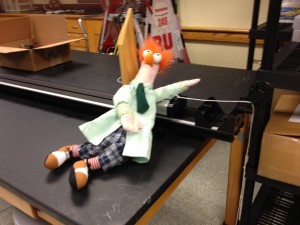Newton’s First Law
In class, you saw several examples of how objects at rest tend to stay at rest. For example the dishes on a tablecloth will not move when a sudden force is exerted on the table cloth, although they will move with a gradual force.

We saw the same thing with a large inertia ball hanging from a string. A sudden jerk will break the bottom string. The ball’s own inertia resists the change in motion. But a gradual pull will break the top string, as the top string experiences tension due to your pull PLUS the weight of the ball.
Your courageous physics teacher was not hurt when the sledge hammer smashed the cinderblock. The inertia of the cinderblock kept it stationary.
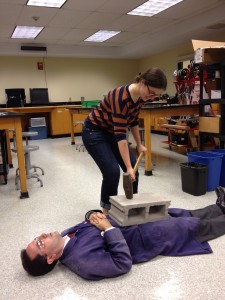
The other concept of Newton’s 1st Law of Motion is that objects in motion tend to maintain their motion unless a force is exerted on them. Beaker gave us a nice demonstration of why you should wear a seat belt.
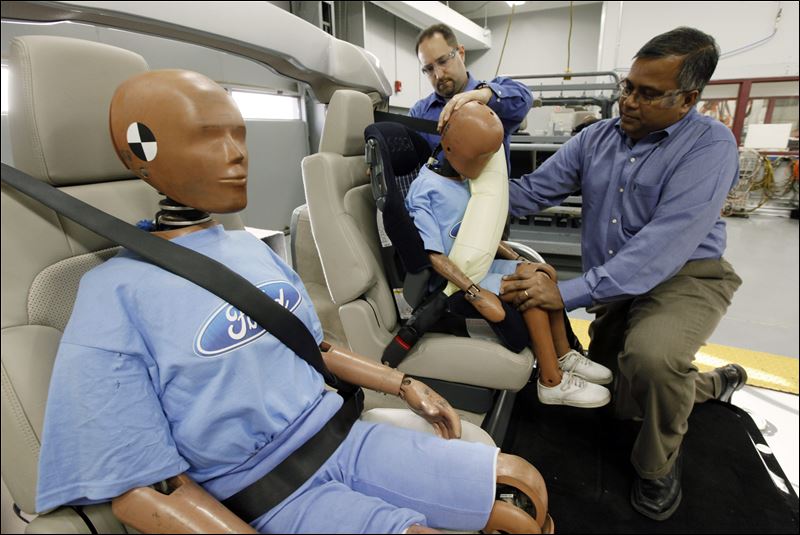
But less intuitive is what happens when you throw a tennis ball up in the air on an airplane or a train. The marble cart gave a nice demonstration of this gedanken or thought experiment. The movie Frames of Reference also shows what happens when we throw a ball in the air on a constantly moving car. It still lands in our hands.
